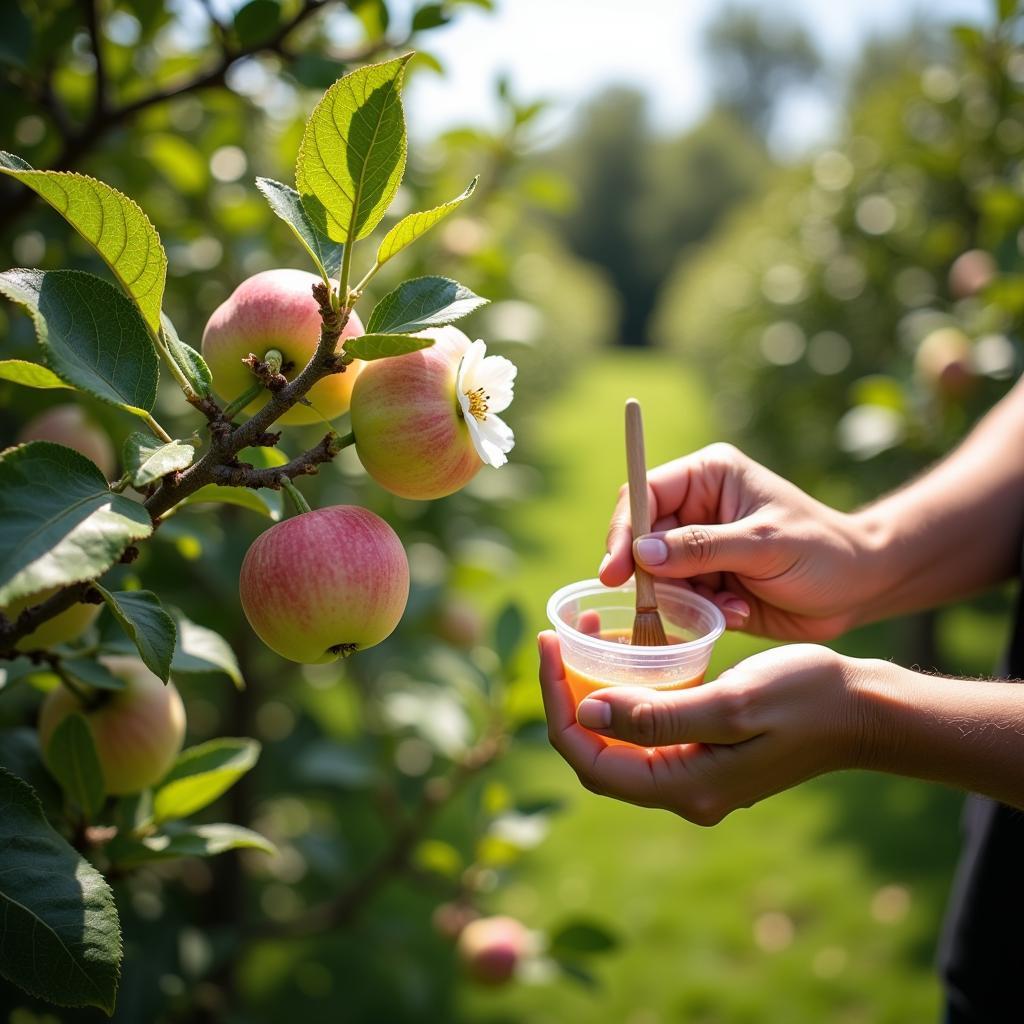Hand-pollinating sugar apples is a crucial technique for maximizing fruit set and improving overall yield, especially in areas where natural pollinators are scarce. This guide will delve into the intricacies of this process, offering a detailed step-by-step approach to ensure successful pollination.
Understanding the Sugar Apple Flower
Before embarking on hand-pollination, it’s essential to understand the structure of the sugar apple flower. These flowers are known as “dichogamy,” meaning the male and female parts mature at different times. This often prevents self-pollination and requires intervention, especially in cultivated settings. The pollen-bearing part is the stamen, while the female part, which receives the pollen, is the pistil. Recognizing these parts is fundamental to successful hand-pollination.
Why Hand-Pollinate Sugar Apples?
While some sugar apple varieties can self-pollinate, many benefit greatly from hand-pollination. This is because the natural shape of the flower makes it difficult for insects like bees to effectively transfer pollen. Hand-pollination increases the chances of fertilization, leading to a higher yield of larger, more uniformly shaped fruit. It also allows for cross-pollination between different varieties, potentially enhancing fruit quality and disease resistance.  Pollinating a Sugar Apple Tree
Pollinating a Sugar Apple Tree
Gathering the Pollen
Collecting pollen requires careful timing. Choose freshly opened flowers in the late afternoon or early evening. Using a small, dry brush or cotton swab, gently collect the pollen from the anthers of the flower. The pollen should appear as a fine, powdery substance. Store the collected pollen in a clean, dry container in the refrigerator until you are ready to pollinate the receptive flowers.
Pollinating the Flowers
The ideal time for pollination is in the morning, when the female parts of the flower are most receptive. Select flowers that are fully open, revealing the stigma, the sticky tip of the pistil. Using the same brush or cotton swab with the collected pollen, gently dab the pollen onto the stigma. Ensure that the stigma is adequately covered with pollen.
When to Expect Results
After successful pollination, the flower will begin to wilt and the ovary will swell, eventually developing into a fruit. Be patient, as this process can take several weeks. Not all pollinated flowers will develop into mature fruits, but hand-pollination significantly increases the odds.
Conclusion
Hand-pollinating sugar apples is a rewarding technique that can dramatically improve fruit production. By following these simple steps and understanding the nuances of the sugar apple flower, you can ensure a bountiful harvest of delicious fruit. This guide, alongside patience and practice, will help you master the art of hand-pollinating sugar apples.
FAQs
- What is the best time of day to collect pollen? Late afternoon or early evening.
- How should I store collected pollen? In a clean, dry container in the refrigerator.
- When should I pollinate the flowers? In the morning, when the stigma is receptive.
- How long does it take for fruit to develop after pollination? Several weeks.
- Is it necessary to hand-pollinate all sugar apple varieties? While some self-pollinate, many benefit from hand-pollination.
Common Scenarios and Questions:
- My sugar apple tree is flowering, but no fruit is developing. This could be due to a lack of pollination. Try hand-pollinating the flowers. You can learn more about making ribbons for your garden by reading hướng dẫn làm nơ bằng ruy băng vải.
- I’ve tried hand-pollinating, but still have limited fruit set. Factors like weather conditions and tree health can also affect fruit development.
Further Exploration
For more information on gardening and plant care, check out our other helpful articles.
Need assistance? Contact us 24/7:
Phone: 0372960696
Email: TRAVELCAR[email protected]
Address: 260 Cau Giay, Hanoi.

